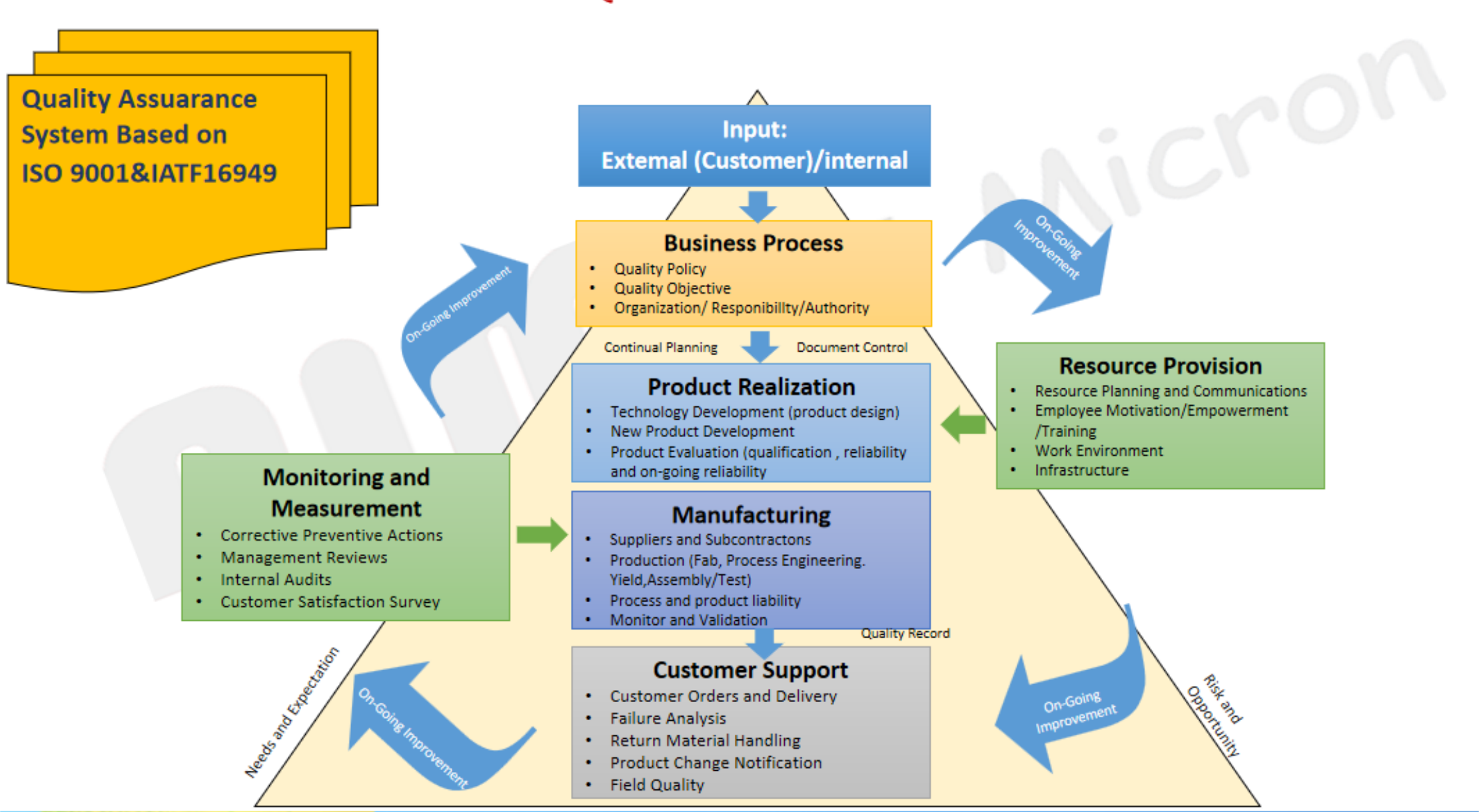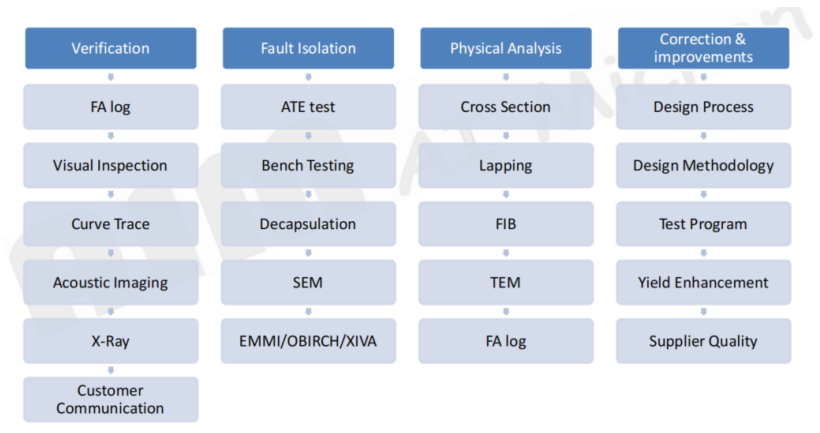The Quality Policy
AI Micron is committed to meeting and exceeding the ever-changing needs of customers, encouraging employees to actively innovate, focusing on preventing risks as the core of work, and continuously improving products, methods, and processes to enhance quality.
Change of Notice
AI Micron complies with the requirements of the quality system document "QPAIM-C-06 Engineering Change Control Procedure" and communicates with customers through Change of Notice three months prior to formal implementation of major changes that affect the appearance, structure, performance, or product quality and reliability of the product occurred in the outsourced manufacturing process.
Change of Notice should include but not limited to:
• Product Change Notification Tracking Number
• AI Micron Contact Information
• Affected Product Information
• Description of Change
• Reason of Change
• Impact of Change
• Verification Plan and Results of Change
• Expected Delivery Date
Quality Support from Suppliers
As a fabless company, our primary suppliers, such as the wafer factories, packaging factories, and testing factories, play a crucial role in providing our customers with high-quality products and services.
AI Micron is equipped with a dedicated product engineering and operations team that is committed to driving suppliers to actively respond to our technical requirements and quality expectations, and to monitor suppliers to make systematic and continuous improvements to their products and processes. The team's goal is to build and continuously optimize a stable, efficient, and reliable supply chain.
Requirements for Tier-I suppliers (wafer factories, packaging factories, and testing factories)
• ISO 9001 Quality Management System Certification
• Production of automotive-grade chips requires compliance with IATF 16949 certification
• Experience in mass production of similar products
• Compliance with AI Micron's management requirements
• Compliance with the required change management
• Effective control of second-tier suppliers
• Rapid response to customer complaints
• Continuous improvement
Requirements for Tier-II suppliers (Tier-I supplier suppliers, key raw materials providers)
• ISO 9001 Quality Management System Certification
• Compliance with AI Micron's management requirements
Tools for Supplier Quality Management
• Quality agreement
• Supplier entry audit
• Production data monitoring of suppliers
• Supplier monthly/Quarterly performance review
• Annual review and On-site audit of suppliers
Continuous Improvement
AI Micron has always been committed to optimizing and improving the foundation architecture and business practices of its quality management system, as well as its pursuit of zero defects. This quality management system is centered around ISO 9001 and IATF 16949, aiming to establish a comprehensive product control system that covers the entire process from product definition to product release, ensuring that the product has high quality and reliable. The goal of the system is to build a continuous self-improvement cycle that focuses on preventing defects.

Figure: AI Micron Continuously Improvement Quality System
AI Micron and supplier (factory) continuous improvement tools:
• Project lessons learned knowledge base
• Internal audit
• Supplier performance evaluation
• Supplier annual review
• Management review
• Customer audit
Failure Analysis
Failure Analysis (FA) is a method of analyzing the electrical or physical properties of a chip or module to determine the root cause of its failure, ensuring the smooth introduction of new products into mass production and providing a reference for continuous optimization of performance. Our chip product engineering team has extensive experience, and we have established in-depth cooperation with leading third-party failure analysis laboratories, ensuring that we can efficiently and accurately complete failure analysis.
AI Micron Failure Analysis Flow Chart
